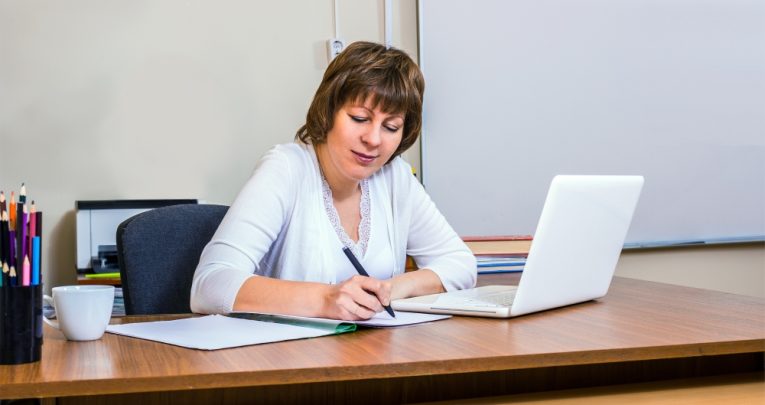Post-COVID classroom routines – A survival guide for mobile teachers

With many teachers facing the prospect of having to use different classrooms in unfamiliar areas of their school, Amy Sayer offers some advice on adjusting to a new, more nomadic daily routine…

- by Amy Sayer

To ensure that their students can safely receive a full and varied curriculum, secondary schools across the country have opted to ‘bubble off’ whole year groups.
A significant number of teachers will therefore find themselves regularly having to move across different ‘bubbles’ and teach lessons in different areas of the school site, outside the comforting surroundings of their own painstakingly personalised classrooms.
For many teachers – myself included – this may cause some sadness and a significant amount of anxiety. I therefore want to share some tips on how be an effective ‘mobile teacher’ while retaining some semblance of sanity in this post-COVID world.
Psychological reminders
Upon receiving your new timetable with its various room locations, you can make things feel more manageable by reflecting on the following points:
1. The children come first However distressed you might feel at the idea, the decision has ultimately been made to keep children safe from COVID as much as possible, while providing them with the broadest curriculum your school is able to offer. This placing of children at the heart of all we do in a school setting ought reassure you that being a ‘mobile’ teacher is ultimately the right thing to do, whatever discomfort that might entail.
2. Everyone’s in the same boat With virtually all members of school staff likely to be out of their comfort zones to a greater or lesser extent, you can take some comfort from knowing that everyone is in the same situation, and that greater levels of empathy among colleagues will naturally grow as a result.
3. Make your feelings known Being able to express your feelings about this new situation is hugely important. The decisions behind the new arrangements at your school won’t have been taken lightly, and your SLT will want to help you with any concerns that might need talking through. It’s entirely normal to feel nervous, and wanting to reach out for support shouldn’t be seen as a sign of weakness during such difficult times.
4. Do some reconnaissance If possible, try to familiarise yourself with the classrooms you’ll be teaching in ahead of time. As getting a feel for the layout of the room, it can be useful to know beforehand where your resources can be kept. In a larger setting, stepping outside of your usual classroom and nearby spaces could be a good way of getting to know other members of staff and help get a better handle on how the whole school community works on a day-to-day basis.
Useful preparations
• Consider the access you’ll require; will you need a new keycard, or any physical keys to access different areas of the school?
• Ensure your shoes are up to the job of handling the extra steps you’ll have to walk; go for comfort over aesthetics.
• Make sure your bag is sufficiently large enough to contain everything you’ll need to take with you and fully waterproof. You could even consider using a wheeled case, if the combined weight is likely to be an issue.
• If you’re going to be moving between buildings, have a decent waterproof jacket to hand to protect you from those inevitable autumn showers.
• Could your school introduce a policy whereby students are responsible for their own folders and/or exercise books? Otherwise, try to set aside clearly labelled resource areas in the classrooms you’ll be using to ensure that students’ work is securely stored.
• Be sure to keep and maintain a supply of the stationery you’ll need for maintaining your resource folder, such as a hole punch and stapler (not forgetting those all-important spare staples…)
• Make sure you know the locations and any access arrangement for the toilet facilities throughout your school.
• Try to allocate times and spaces in your timetable for catching up with colleagues over lunch or between lessons. Workplace camaraderie can lend a boost to your wellbeing at the best of times, but especially now.
• Work out a system for accessing your class resources and storing photocopies. Maybe print off a timetable that indicates when your own classroom is in use, so that you know when it’s convenient to file away resources that aren’t required and collect the ones you need.
• Find out from the teachers in the classrooms you’ll be using what opening the windows or turning on the radiator involves. A USB fan that plugs into your laptop might be a good investment in case the weather remains muggy throughout September (assuming your school’s policies and COVID restrictions allow it).
Amy Sayer is a head of religious studies, mental health first aider and writer











